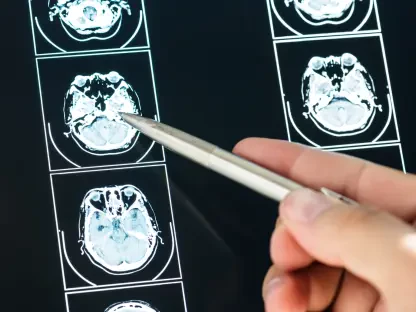The Department of Veterans Affairs (VA) has provided an important update on its efforts to modernize its electronic health record (EHR) system by announcing that nine additional medical centers will implement the Oracle EHR by 2026. This market analysis aims to examine current trends, challenges, and future projections related to this strategic initiative.
Market Context and Strategic Importance
The modernization of the VA’s electronic health record system is a significant step aimed at enhancing the quality and efficiency of healthcare services provided to veterans. Historically, the VA has struggled with an outdated EHR system, leading to inefficiencies in patient care and hospital operations. The introduction of the Oracle EHR system represents a strategic move to address these challenges.
Analyzing the potential benefits, the new EHR system promises improved data management, seamless care coordination, and a streamlined workflow for healthcare providers. This transformation is expected to result in better health outcomes for veterans and more efficient use of resources across the healthcare network.
Analysis of Market Trends, Data, and Projections
Strategic Rollouts: Regional Focus and Deployment
The VA’s strategic plan involves rolling out the Oracle EHR system in four medical centers in Ohio, three in Indiana, one in Kentucky, and one in Alaska. This approach focuses on regional priorities to maximize the impact of the new system. The selected centers, such as the Cincinnati VA Medical Center-Fort Thomas and the Alaska VA Healthcare System, are integral to this phase of the rollout.
These new deployments are designed to build on the groundwork laid by earlier implementations. The aim is to enhance healthcare delivery in the selected regions by leveraging these initial successes and overcoming previously encountered hurdles.
Historical Challenges and Progress
The VA’s journey toward EHR modernization has been far from smooth. Initially, Cerner was tasked with the upgrade; however, Oracle’s acquisition of Cerner meant inheriting the project’s challenges. Previous deployments experienced significant technical problems and delays, prompting the VA to halt the rollout to focus on system optimization.
This period allowed the VA to gather critical insights and refine the system, preparing for a more effective rollout in the future. Understanding the difficulties faced in the past is essential for anticipating potential future challenges and developing effective mitigation strategies.
User Feedback and Technological Adaptations
User satisfaction and technological adaptability are key components of the EHR modernization effort. The system’s reception has been mixed, with significant user dissatisfaction reported. Surveys indicate that 75% of respondents have concerns about the system’s efficiency, necessitating ongoing user support and training.
Addressing these concerns involves ensuring the system meets the varied needs of different regions and healthcare facilities. Tailored solutions that consider local demographics and logistical factors are vital for successful adoption. The VA must also focus on improving user experience through continuous feedback and training programs.
Economic Considerations and Legislative Oversight
The financial aspects of this modernization project have been contentious. Previously, cost estimates for the EHR system ranged significantly, impacting budget allocations and planning. Accurate and updated cost projections are now more critical than ever, given recent legislative scrutiny.
Lawmakers have called for revised cost estimates and a clear implementation schedule to ensure transparency and effective oversight. This legislative involvement underscores the importance of financial accountability and the need for the VA to communicate its plans effectively.
Future Directions and Strategic Insights
Looking ahead, the completion of the EHR modernization project is expected to reshape the VA’s healthcare delivery model significantly. Integrating advanced technologies like machine learning and AI within the Oracle EHR system could further enhance patient care and operational efficiency.
Experts suggest that by fully implementing the EHR system, the VA could achieve substantial improvements in care coordination, patient outcomes, and cost management. Continuous innovation and adaptation to emerging technologies will be critical to the project’s long-term success.
The focus now shifts to maintaining momentum, addressing ongoing challenges transparently, and ensuring that the system meets its goals. Implementing best practices and fostering a culture of continuous improvement can help healthcare providers maximize the benefits of the new system.
Strategic Recommendations and Next Steps
In conclusion, the VA’s initiative to modernize its EHR system represents a critical strategic effort to improve veteran healthcare. Key recommendations moving forward include enhancing communication and training for users, providing timely updates on implementation progress, and ensuring that regional needs are effectively met.
Stakeholders should engage in continuous improvement efforts, adopt industry best practices for EHR usage, and participate actively in feedback mechanisms. These actions will not only enhance user satisfaction but also ensure that the system delivers on its promises.
As the VA continues this significant transformation, addressing existing challenges and adapting to new insights will be crucial for achieving a successful and cohesive EHR modernization project.









